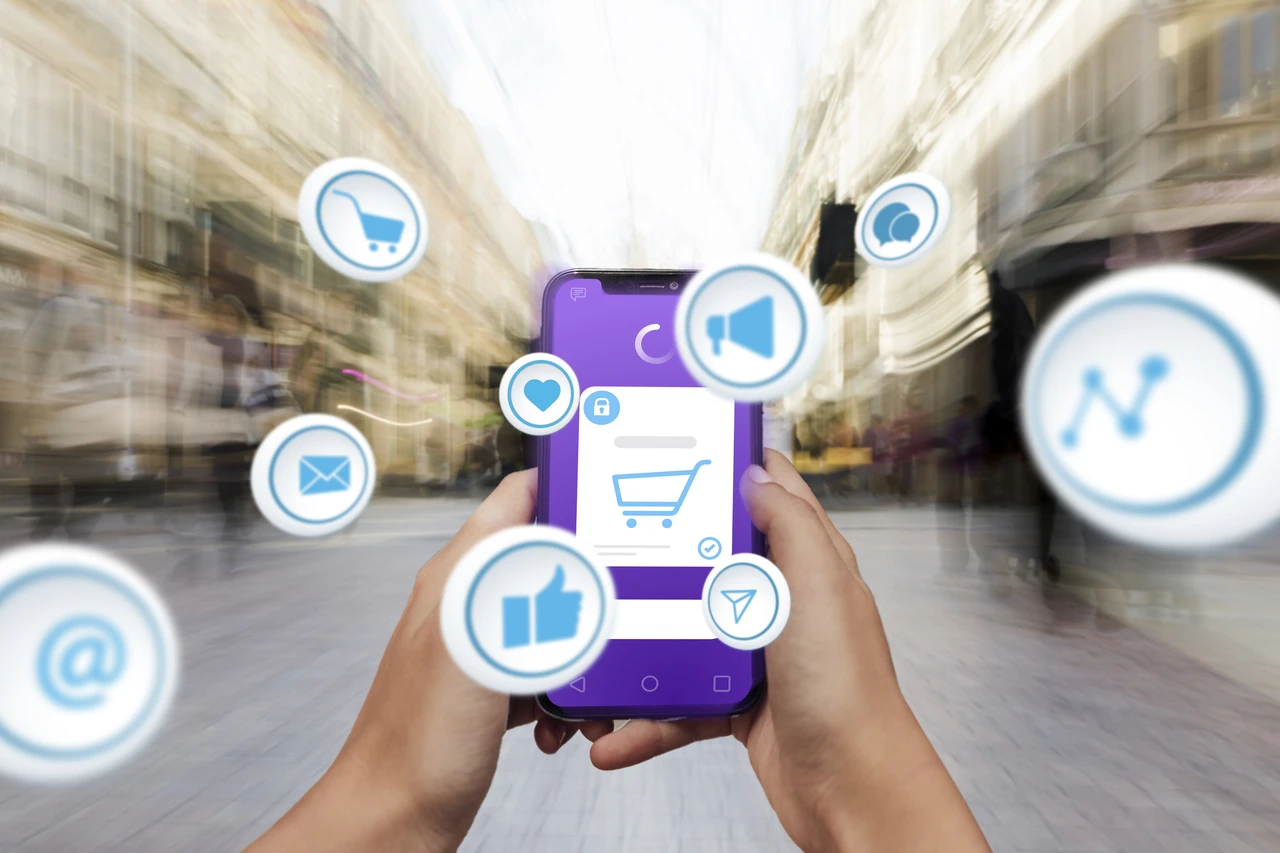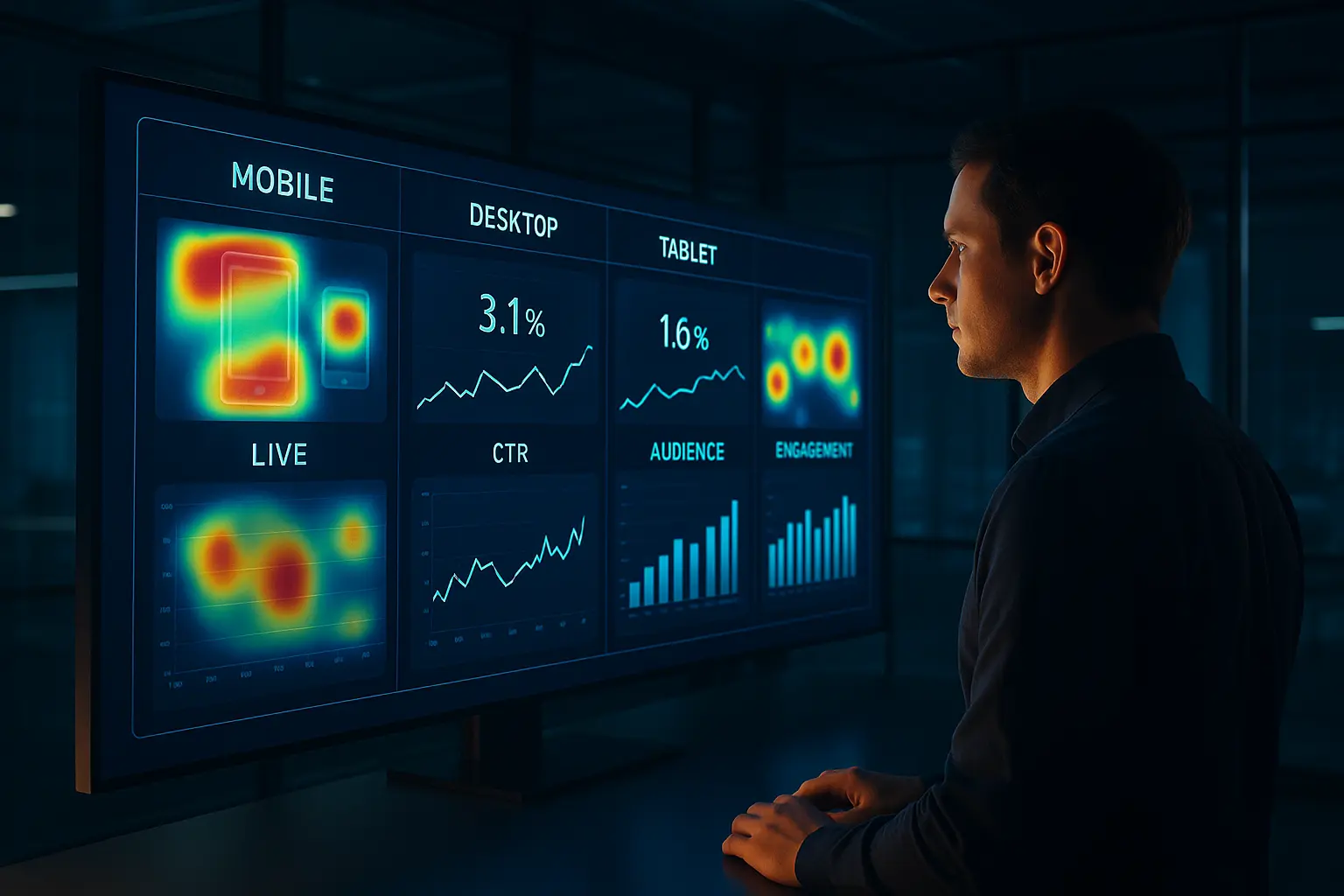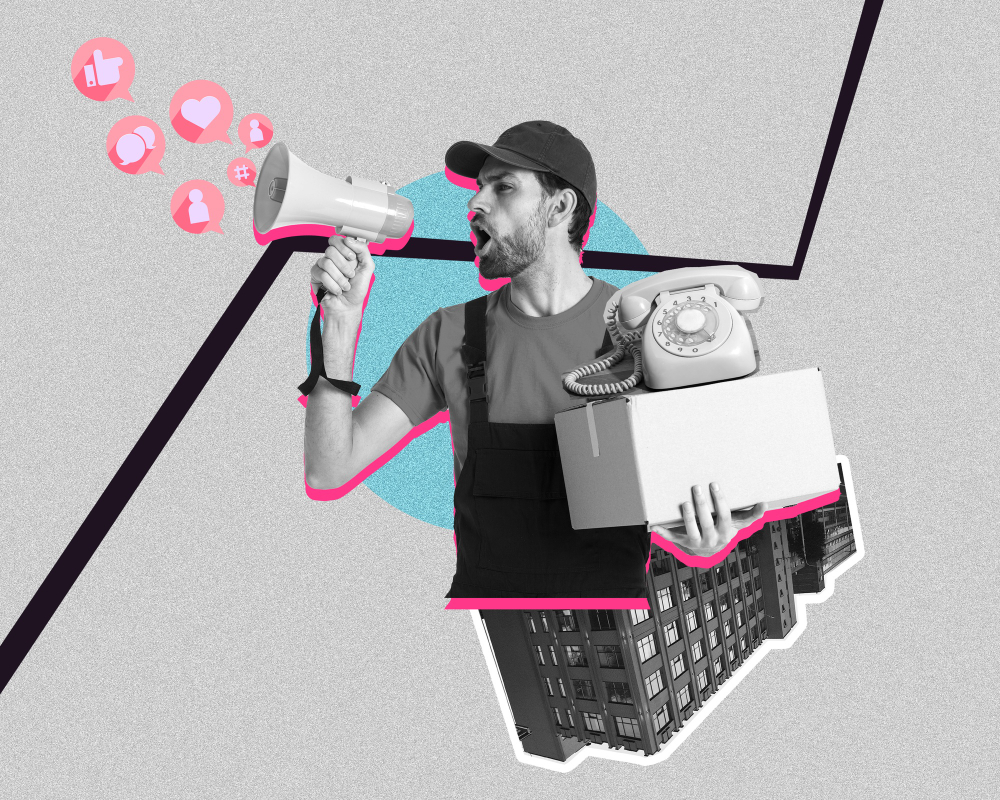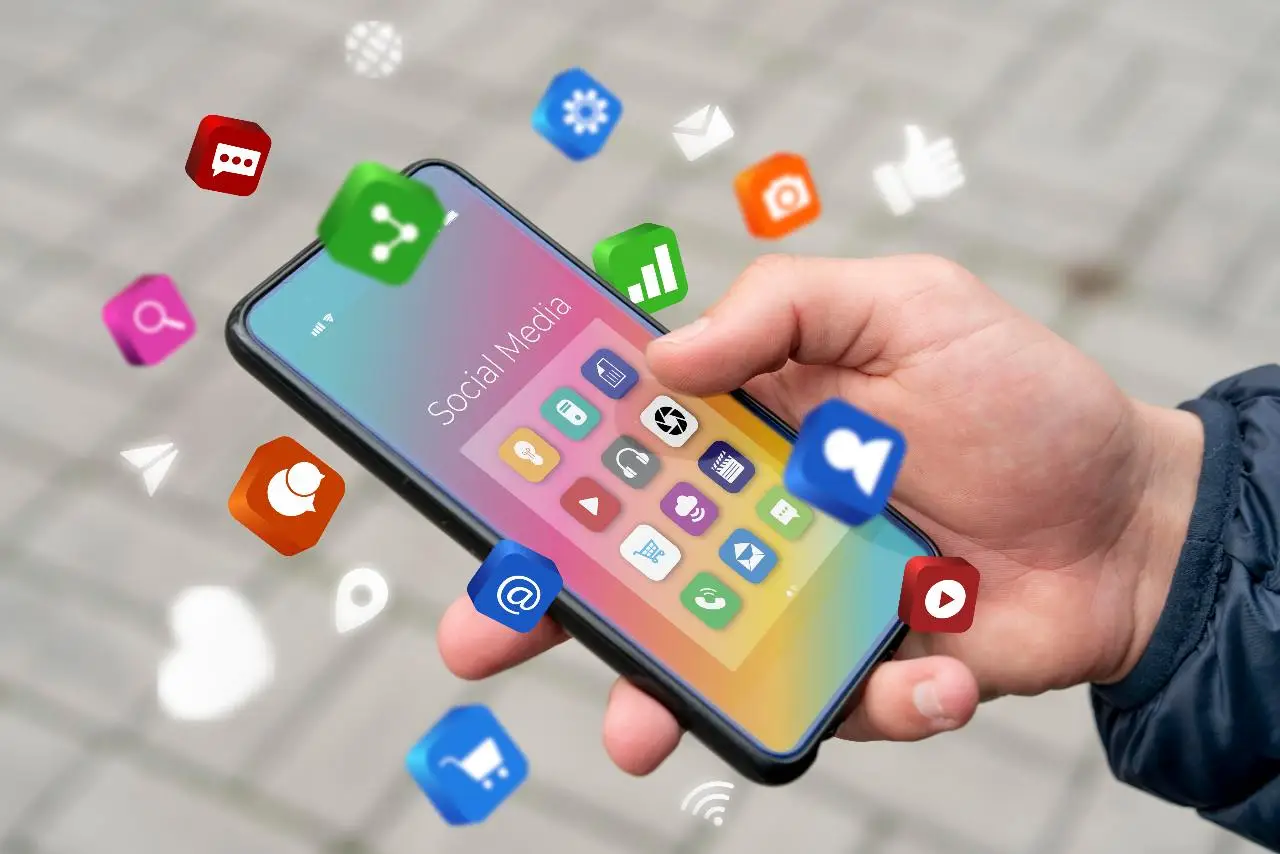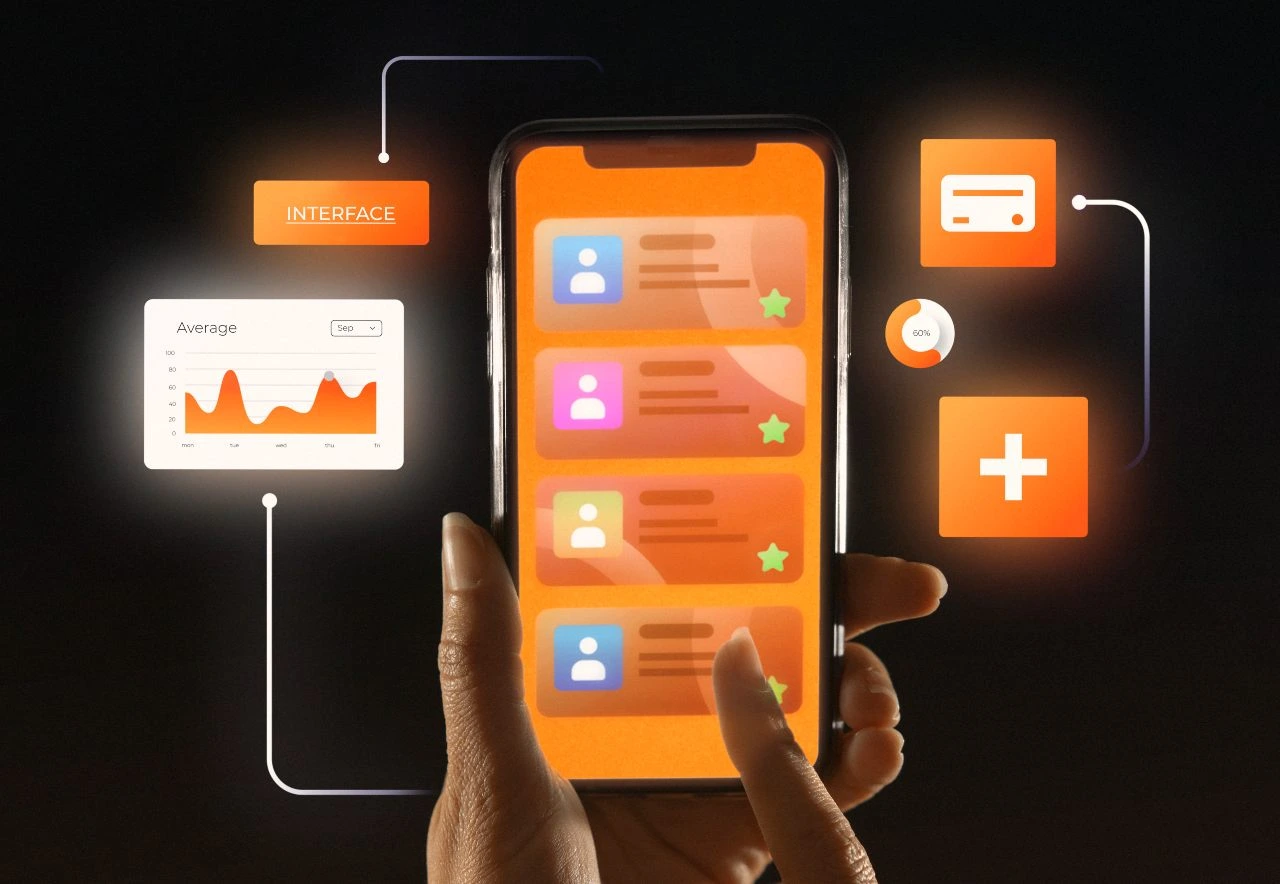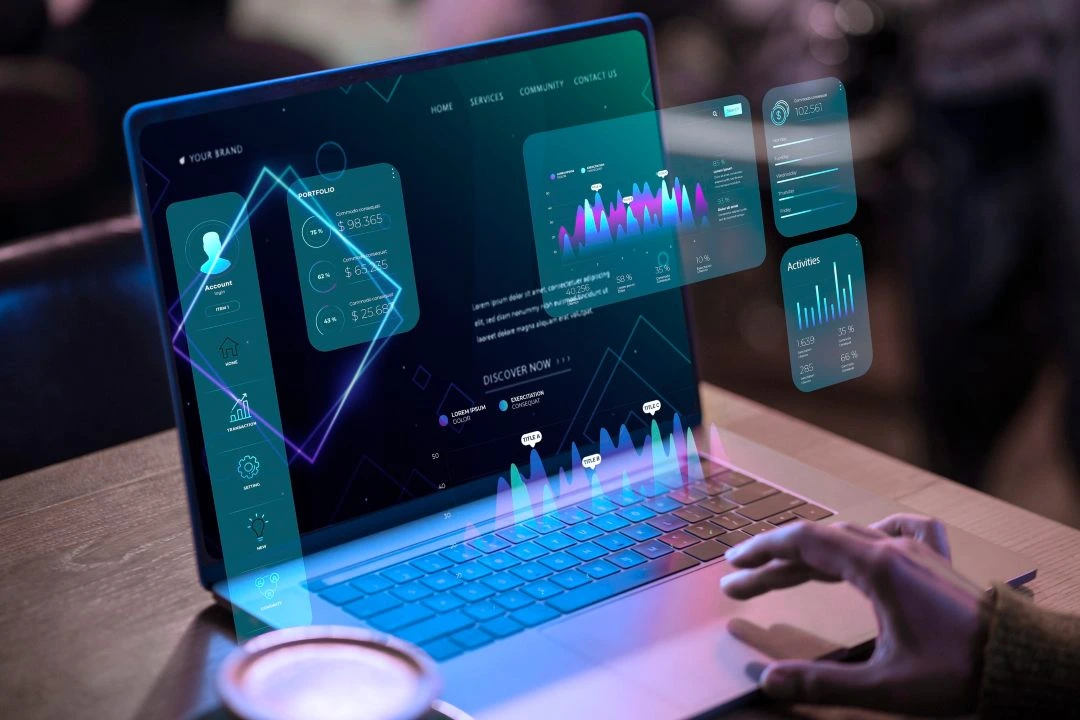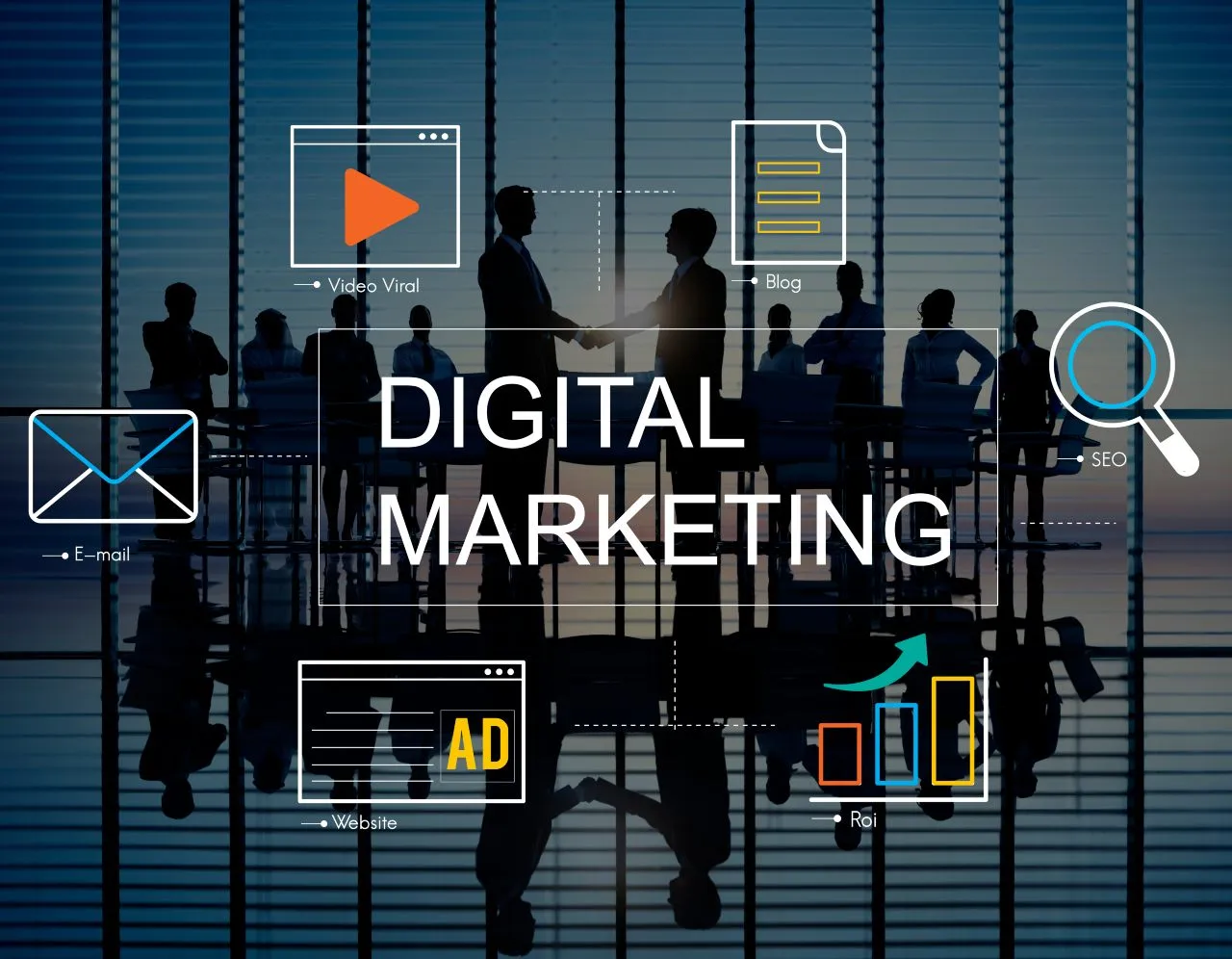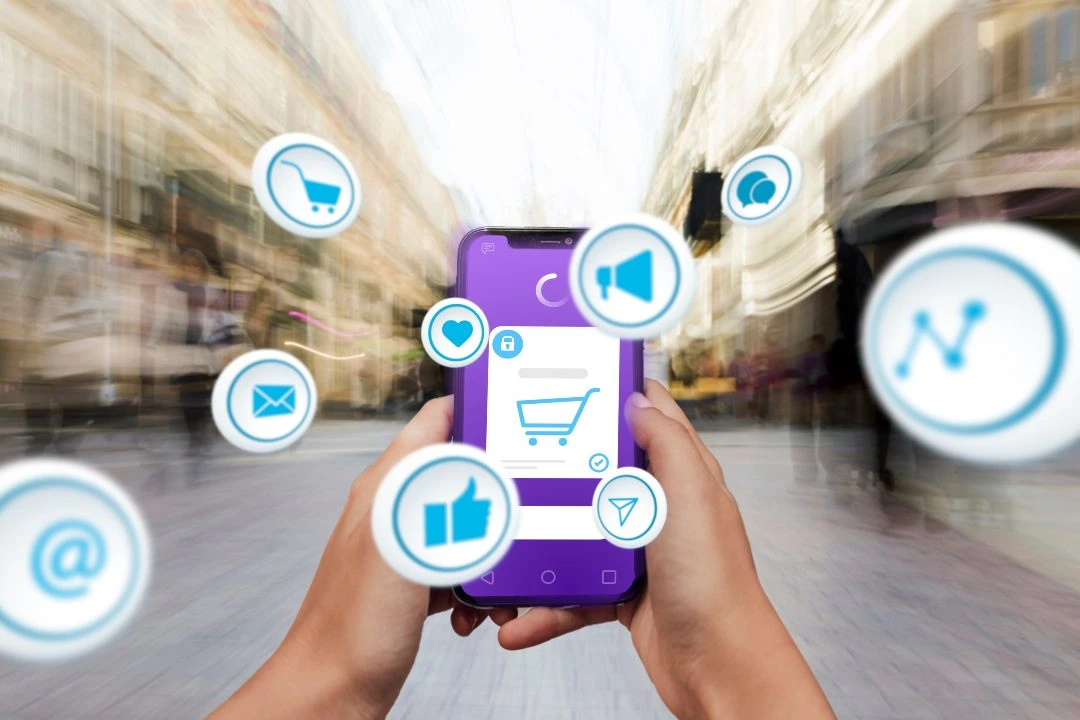“What will e-commerce look like in 2025?” Get ready for a seismic shift.
As consumer behavior evolves and technology continues its exponential leap, e-commerce is poised for a dramatic transformation. Businesses that want to remain relevant need to adapt, or risk being left behind. From AI-powered personalization to immersive AR experiences, the future of online retail will be shaped by innovation and a relentless focus on the customer.
In this article, we’ll explore the key e-commerce trends that will dominate 2025, offering insights into how businesses can prepare for these changes and capitalize on the opportunities they present. Let’s dive in and explore the future of e-commerce!
The Role of AI in Shaping Hyper-Personalized E-Commerce Experiences
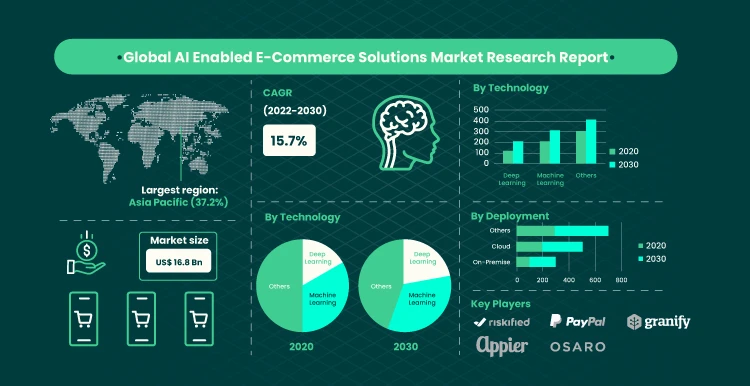
Source: Forbytes
AI is no longer just a futuristic concept—it’s the driving force behind tailored customer experiences in e-commerce. In an era where consumers demand relevance and immediacy, artificial intelligence is empowering brands to go beyond generic interactions by delivering hyper-personalized content that aligns with individual preferences, past behaviors, and even real-time activities. This isn’t just about better user experiences; it’s about creating meaningful connections that foster loyalty and drive sales in an increasingly competitive digital landscape.
- AI-driven personalization will dominate e-commerce, allowing brands to deliver customized content based on individual user preferences. Source
- AI will be used to create dynamic content that adjusts in real time based on user interactions, such as e-commerce websites modifying their homepage content based on past browsing behavior. Source
- Brands will use AI to forecast consumer trends and optimize marketing campaigns, including personalized push notifications or email recommendations to users likely to convert. Source
- Amazon’s AI-driven personalization system recommends products based on user activity, significantly boosting sales, and more brands are expected to adopt similar approaches. Source
- Leverage AI-driven analytics tools like Salesforce, HubSpot, or Adobe Experience Cloud to analyze consumer behavior. Source
- Implement machine learning models to automate and tailor marketing messages. Source
- Ensure that your personalization efforts respect user privacy and adhere to data protection laws. Source
- Globally, first-time app installations are projected to reach 183.7 billion in 2024. Source
Key Takeaway: Personalization is the Future Standard of E-Commerce
The era of one-size-fits-all customer interactions is behind us. As AI continues to evolve, its ability to deliver highly relevant and adaptable content will be a game-changer for customer retention and revenue growth. By incorporating AI to analyze consumer data, predict preferences, and create dynamic user experiences, brands are not simply meeting customer expectations—they are staying ahead of them. However, gaining consumer trust is equally critical, so transparent data usage and compliance with privacy laws must remain top priorities.
Pro Tip:
Start small with AI-driven personalization by automating product recommendations or targeted email campaigns, then gradually scale your efforts using advanced machine learning tools. As the state of ecommerce in 2025 continues to evolve, personalization is no longer a luxury—it’s a necessity for staying competitive. To maximize effectiveness, ensure your technical foundations are strong by conducting an ecommerce SEO audit, optimizing both user experience and search performance. Platforms like Adobe Experience Cloud or HubSpot make it easy to integrate personalization at scale while maintaining compliance with global privacy standards.
The Rise of Voice Search and Conversational Commerce
With the growing integration of voice assistants into our daily lives, the way consumers search and interact with brands is undergoing a seismic shift. Voice search is no longer a futuristic concept—it’s a powerful tool reshaping digital interactions. By 2025, the demand for fast, hands-free solutions will dominate, making it imperative for brands to fine-tune their SEO strategies to align with conversational and local intent. Companies that adapt to this dynamic will have a distinct competitive edge in capturing attention across voice-enabled devices.
- By 2025, optimizing content for voice search will be a necessity as more consumers rely on spoken commands rather than typing. Source
- Focus on natural language and long-tail keywords that mimic everyday speech, such as “Where’s the best pizza place near me?” instead of “best pizza NYC.” Source
- Optimize for local SEO by ensuring your business is registered on Google My Business and keeping your location information up to date, as many voice searches are location-based. Source
- Structure content to appear in featured snippets by using clear headings and answering common user questions concisely to improve visibility. Source
- Over half of smartphone users will use voice commands daily by 2025, necessitating a rethinking of SEO strategies focused on conversational content and natural language queries. Source
- In the U.S., 41% of adults use voice search daily. Source
Key Takeaway: Positioning Your Brand for the Voice Revolution
The rise of voice search signifies more than a tech trend—it reflects a fundamental change in how people interact with technology. To remain competitive, brands must cultivate a conversational tone in their content and prioritize optimizing for local, real-time needs. From smart speakers to in-car voice systems, voice-enabled interactions are becoming the norm, offering opportunities to connect with audiences in moments when they’re most engaged. Start thinking beyond traditional SEO by aligning your strategies with natural language and anticipating the intent of voice-initiated queries. Conducting an eCommerce SEO audit can help identify gaps in your strategy and ensure your site is optimized for both traditional and voice search.
Pro Tip:
Don’t overlook the importance of speed. Voice search users expect lightning-fast answers, so ensure your site loads quickly and provides concise, relevant responses. Tools like PageSpeed Insights can help you evaluate and optimize your site performance to stay ahead of the competition.
Leveraging AR and Mobile-Optimized Video to Elevate Customer Engagement
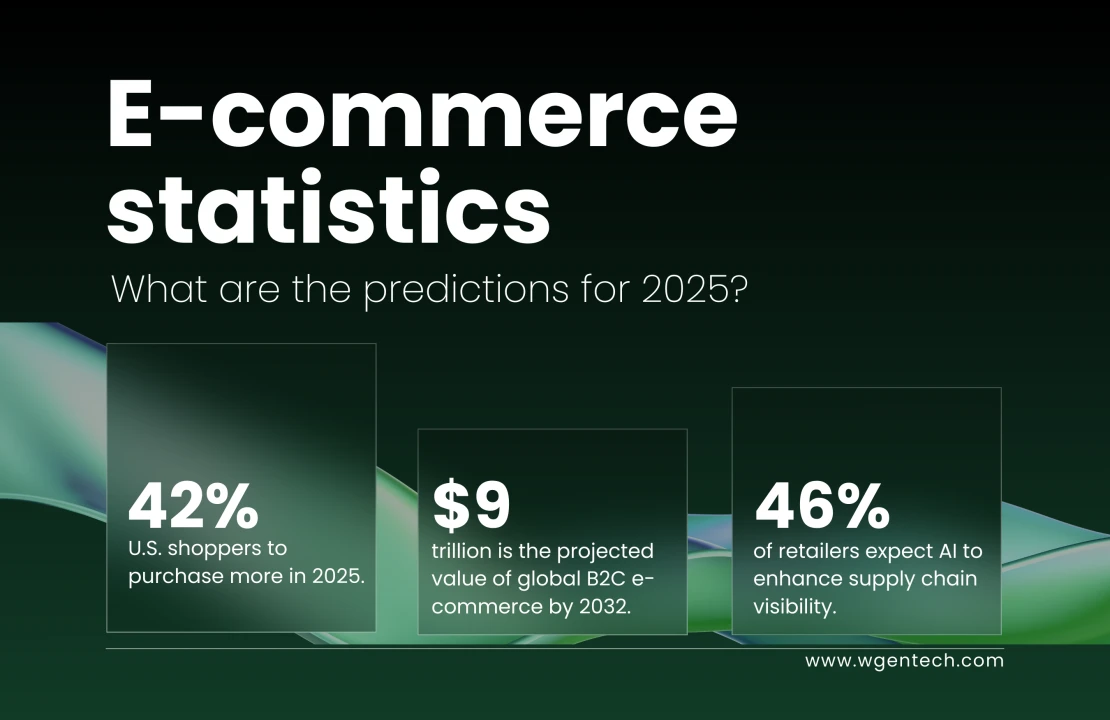
Source: LinkedIn
The future of e-commerce lies in creating immersive and seamless digital experiences that capture consumer attention and foster meaningful interactions. Augmented Reality (AR) and video content are leading the charge in this transformation. AR allows brands to offer hands-on experiences from the comfort of a user’s home, whether through virtual try-ons or interactive property tours, while video continues to dominate as a preferred medium for storytelling, product education, and entertainment. To succeed in 2025’s competitive landscape, brands must not only adopt these tools but innovate within them to deliver memorable, mobile-first experiences that align with shifting consumer behaviors.
- AR is forecasted to be a cornerstone of marketing strategies in 2025, enabling brands to engage audiences by blending the physical and digital worlds. Source
- Compared to traditional media, AR experiences drive higher levels of user interaction and engagement. Source
- Top brands like IKEA and Warby Parker are leveraging AR for virtual product try-ons, making it easier for customers to visualize purchases before buying. Source
- AR-powered property tours let prospective buyers explore homes remotely, offering convenience and a closer-to-life experience. Source
- The AR market is projected to skyrocket to $198 billion by 2025 as its integration in mobile marketing accelerates globally. Source
- Mobile dominance continues to rise, with over 57% of internet traffic now generated by mobile devices, underscoring the need for mobile-optimized video content. Source
- Short-form video content, popularized by platforms like TikTok, Instagram Reels, and YouTube Shorts, excels at capturing attention quickly. Source
- Longer-form videos like documentaries and behind-the-scenes features foster deeper brand connections through storytelling. Source
- Interactive videos, such as beauty tutorials where viewers can choose specific looks, empower users to shape their viewing experience. Source
- Shoppable videos streamline the purchase journey by allowing users to directly buy products showcased in the video content. Source
- Mobile-friendly video content benefits from captivating visuals and captions, ensuring clear communication even when users watch without sound. Source
- Compelling storytelling remains key to creating emotional connections, making videos more impactful and memorable. Source
Key Takeaway: The Convergence of Innovation and Mobility
As we approach 2025, it’s clear that the future of customer engagement revolves around immersive, innovative experiences tailored to a mobile-first audience. AR represents a game-changing opportunity for brands to bridge the gap between online shopping and in-person interaction, offering practical tools like virtual try-ons and remote tours to build trust and excitement. Similarly, video evolution continues to influence consumer behavior—with formats like interactive, shoppable, and narrative-driven content encouraging engagement at every stage of the buyer’s journey. For smaller businesses, adopting these technologies can feel daunting, but starting with foundational digital marketing strategies for small businesses can help lay the groundwork for success while scaling up gradually.
Pro Tip:
Start small but think big. Experiment with AR by integrating low-cost implementations like virtual filters or basic 3D product views before expanding to fully immersive campaigns. Meanwhile, for video, analyze your audience’s preferences to strike the right balance between short-form entertainment and long-form storytelling. Tools like Canva, Animoto, or Lumen5 can help brands create professional-grade video content efficiently at scale.
Unlocking E-Commerce Potential with 5G and Mobile Wallet Advancements
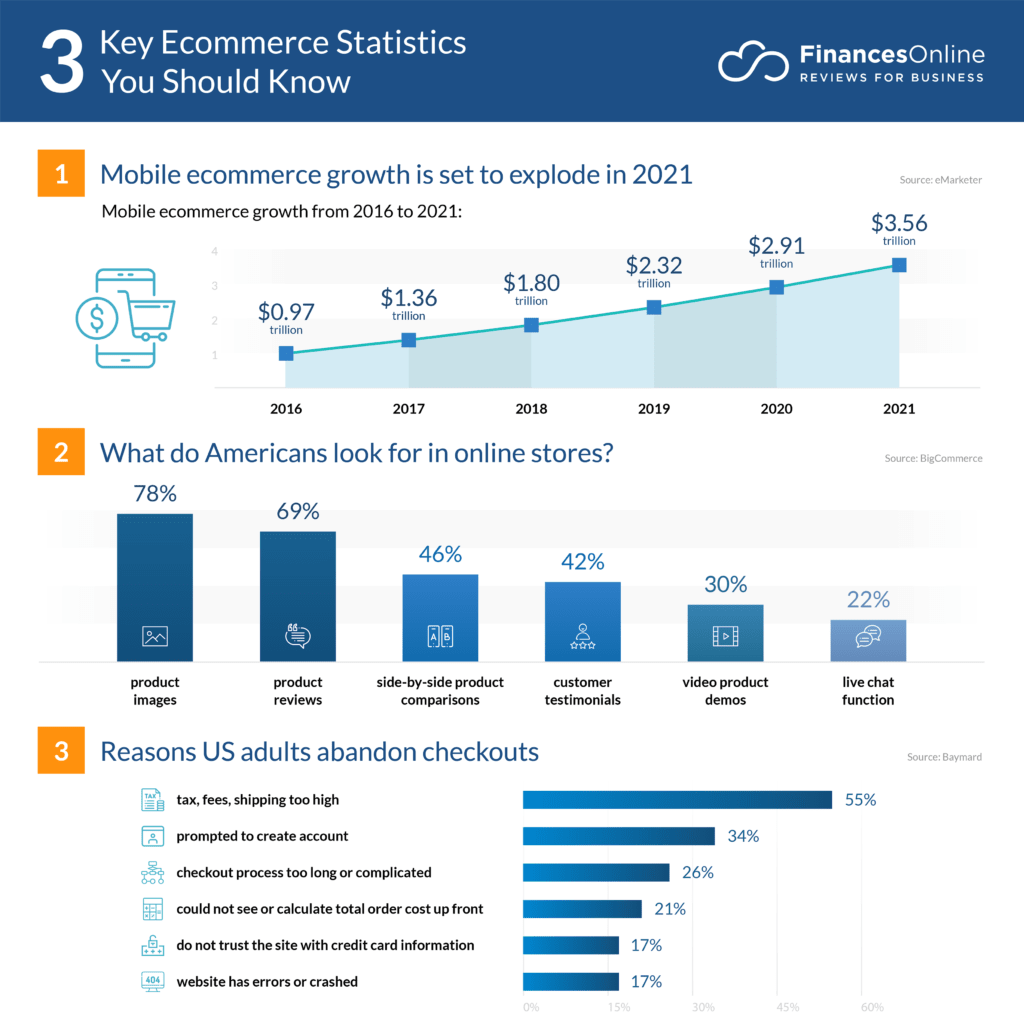
Source: Finance Online
As technology reshapes the retail landscape, 5G and mobile wallets are emerging as two powerhouses driving innovation within e-commerce. 5G’s lightning-fast speeds and reduced latency are poised to elevate mobile experiences, from streaming product demos to enabling real-time interactivity. Meanwhile, mobile wallet adoption is rapidly transforming how consumers shop, with businesses tapping into this trend to offer secure, streamlined, and user-friendly payment options. Together, these advancements are empowering brands to deliver not just transactions but frictionless, engaging customer journeys.
- The rollout of 5G technology will transform e-commerce by providing faster internet speeds and lower latency, enabling seamless, immersive, and high-quality content experiences. Source
- 5G enables the delivery of high-definition videos without buffering, allowing for live events or streaming product demos in real-time with zero interruptions. Source
- 5G enhances capabilities for real-time gaming and interactive ads, enabling brands to develop real-time multiplayer games or live quizzes to engage their audience. Source
- More complex and engaging AR/VR experiences will become commonplace, thanks to 5G’s increased data capacity. Source
- By 2025, 5G networks are expected to cover one-third of the world’s population, enhancing mobile marketing capabilities. Source
- The number of mobile payment users worldwide is expected to surpass 1.31 billion by 2023, reflecting a significant shift toward mobile wallet and payment innovations. Source
- QR code payments, widely adopted in Asia, are becoming mainstream globally, with businesses integrating QR codes into physical and digital stores. Source
- Biometric authentication, such as fingerprint and facial recognition, enhances security and convenience for users, becoming a standard method for authorizing transactions. Source
- Offer cashback or discounts for using mobile payments to incentivize users, which can increase adoption and drive repeat purchases. Source
- Streamline the payment journey to reduce cart abandonment by using features like one-click payment options to make transactions as seamless as possible. Source
- The convenience of mobile payments will encourage brands to offer innovative payment methods and loyalty programs, with more apps integrating cryptocurrency payments and buy-now-pay-later options. Source
Key Takeaway: Bridging Technology and Convenience is the Future
The synergy between 5G and mobile wallet innovations is reshaping customer expectations and pushing brands to think beyond traditional e-commerce models. With 5G enabling real-time, high-definition experiences and mobile wallets streamlining payment workflows, businesses can create an ecosystem where shopping is not just an activity but an immersive, personalized journey. To stay ahead, brands should explore creative ways to maximize these technologies—offering interactive campaigns, optimizing AR/VR shopping experiences, and making payments as effortless as a single tap.
Pro Tip:
Don’t just adopt these technologies—adapt them creatively. Leverage 5G’s capabilities to host live-streamed product showcases or virtual try-on tools, and pair them with mobile wallet loyalty integrations such as instant rewards or gamified incentives. These combined strategies can help deepen customer engagement and drive long-term loyalty.
Social Commerce and Gamified E-Commerce Experiences
As consumers increasingly integrate social media into their daily lives, the lines between scrolling and shopping are fading fast. Social platforms like TikTok, Instagram, and Pinterest are no longer just spaces for connection—they’re evolving into vibrant, transaction-focused marketplaces where discovery meets convenience. At the same time, gamified and interactive e-commerce experiences are reshaping how brands engage audiences, turning passive browsing into immersive, loyalty-driven journeys.
- Social commerce sales in the U.S. are expected to hit $79.64 billion by 2025, making up 5.2% of all e-commerce sales. Source
- In-app purchases streamline the buyer journey, enabling users to shop seamlessly without leaving their favorite social platforms. Source
- Peer recommendations and user-generated content (UGC) remain more trusted than traditional advertisements. Brands can maximize this by encouraging authentic UGC that showcases their products in real-life scenarios. Source
- Collaborating with influencers can lead to authentic product endorsements that tap into their loyal audiences to boost conversions. Source
- Shoppable posts on platforms like Instagram allow users to buy products directly from posts, minimizing friction in the conversion journey. Source
- Live-streamed shopping events are surging in popularity, enabling real-time interaction between brands and shoppers for a highly engaging, instant-purchase experience. Source
- TikTok is setting new standards in social commerce with shoppable ads and its TikTok Shop, allowing brands to merge entertainment and sales strategies effectively. Source
- Gamified activities like branded games engage users by sparking competition and rewarding participation, leading to higher engagement. Source
- Gamification also offers a subtle way to gather valuable customer data while enhancing user interaction. Source
- Reward-based games, such as Starbucks’ AR-driven loyalty campaigns, boost engagement by offering tangible incentives like points or discounts. Source
- Augmented Reality (AR) quizzes elevate the shopping experience by making it more dynamic—for instance, beauty brands can guide users to tailor-made skincare solutions through interactive visuals. Source
- Customizing gamified content to align with audience preferences ensures the experiences remain relevant and compelling. Source
- Offering incentives like discounts or exclusive access encourages users to return and engage repeatedly with gamified experiences. Source
- Tracking user engagement with gamified elements allows brands to identify what resonates and refine their strategies for maximum impact. Source
Key Takeaway: Driving Engagement with Experiential Commerce
The fusion of social commerce and gamification transforms e-commerce from a transactional activity into an experiential journey. This trend isn’t just about selling—it’s about creating an emotional connection with the consumer through community-driven trust, interactive features, and entertainment value. Brands that succeed in this space are those that embrace the full spectrum of innovation, from leveraging TikTok’s viral potential to designing AR-powered quizzes that personalize the path to purchase.
Pro Tip:
Take a holistic approach to integrate commerce with entertainment. Pair influencer partnerships with gamified campaigns to double down on engagement, and make the most of platform-native features like shoppable posts and live-stream shopping. As you experiment, regularly analyze performance metrics to uncover which strategies drive loyalty, conversions, and long-term growth.
Building Trust Through Sustainability and Privacy-First Strategies
In an era where consumers are more informed and values-driven than ever, brands can no longer afford to ignore the importance of ethical marketing and privacy. Sustainability isn’t just a buzzword—it’s a standard. Meanwhile, growing concerns over data usage are redefining how companies connect with their audiences. To resonate with today’s consumers, brands must navigate the dual priorities of social responsibility and transparency in data practices. Below are the emerging trends and actionable strategies for brands looking to stay ahead.
- A Nielsen report reveals that 73% of global consumers are willing to change their buying habits to reduce environmental impact, underscoring the business value of sustainability. Source
- Highlight tangible actions like reducing waste, using sustainable materials, or supporting environmental causes to appeal to eco-conscious consumers. Source
- Authenticity is critical—greenwashing will backfire. Be transparent about your environmental initiatives and share ongoing efforts to improve. Source
- Tell stories about your sustainability journey, such as ethical sourcing or initiatives benefiting local communities, to humanize your brand. Source
- Partner with influencers who share your values for genuine, impactful promotion of ethical and sustainable practices. Source
- Sustainability now extends to digital efforts, with brands optimizing websites and apps for energy efficiency to minimize their digital carbon footprint. This approach often ties into broader strategies, such as adopting a B2B website strategy that prioritizes both user experience and responsible digital practices.
- Consumers are increasingly privacy-conscious, with 79% expressing concern about how companies utilize their personal data. Source
- Transparency in data handling is vital. Clearly communicate what data is collected, why it’s needed, and how it will be used. Source
- Implement user-friendly consent management systems, such as cookie opt-in pop-ups, to build trust. Source
- Encourage zero-party data sharing through interactive experiences like quizzes, where users willingly provide personal insights. Source
- Apple’s App Tracking Transparency (ATT) feature is pushing marketers to adopt privacy-compliant strategies, putting user consent at the center of the equation. Source
- Personalize customer experiences responsibly by leveraging anonymized data or broad demographic segments to stay both effective and ethical. Source
Pro Tip:
Turn your privacy and sustainability efforts into a competitive edge by communicating them effectively. Consider creating dedicated landing pages or content hubs that showcase your commitment to environmental and ethical values. Simultaneously, use tools like consent management platforms or loyalty programs to reinforce transparency and empower users, making your brand one they’re proud to engage with.
Conclusion
As 2025 approaches, the e-commerce landscape is poised for transformative growth, powered by cutting-edge technologies and evolving consumer expectations. From AI-driven personalization that predicts and delivers seamless user experiences to the integration of AR and 5G for immersive interactions, businesses that embrace these trends will lead the charge in redefining digital commerce. At the same time, the rise of voice search, social commerce, and gamified content points toward a future where engagement and accessibility are paramount. Yet, as innovation surges, the emphasis on ethical marketing and data privacy underscores the importance of trust and transparency in cultivating lasting customer relationships.
The future of e-commerce is not just about adopting new technologies—it’s about creating meaningful experiences that resonate with modern consumers. Brands that prioritize sustainability, connect authentically through storytelling, and leverage the full spectrum of digital tools will not only meet but exceed ever-changing customer expectations.
Ready to lead your business into this dynamic era? If you’re ready to supercharge your business, don’t hesitate to get in touch with our full-service marketing pros for a free quote and discover how we can help you thrive in the evolving e-commerce landscape.
About The State of E-Commerce in 2025: Consumer Trends and Digital Innovations
This guide was written by the Scopic Studios team and reviewed by Araksya Hakobjanyan, SEO Lead at Scopic Studios.
Scopic Studios delivers exceptional and engaging content rooted in our expertise across marketing and creative services. Our team of talented writers and digital experts excel in transforming intricate concepts into captivating narratives tailored for diverse industries. We’re passionate about crafting content that not only resonates but also drives value across all digital platforms.
Note: This blog’s images are sourced from Freepik.
































